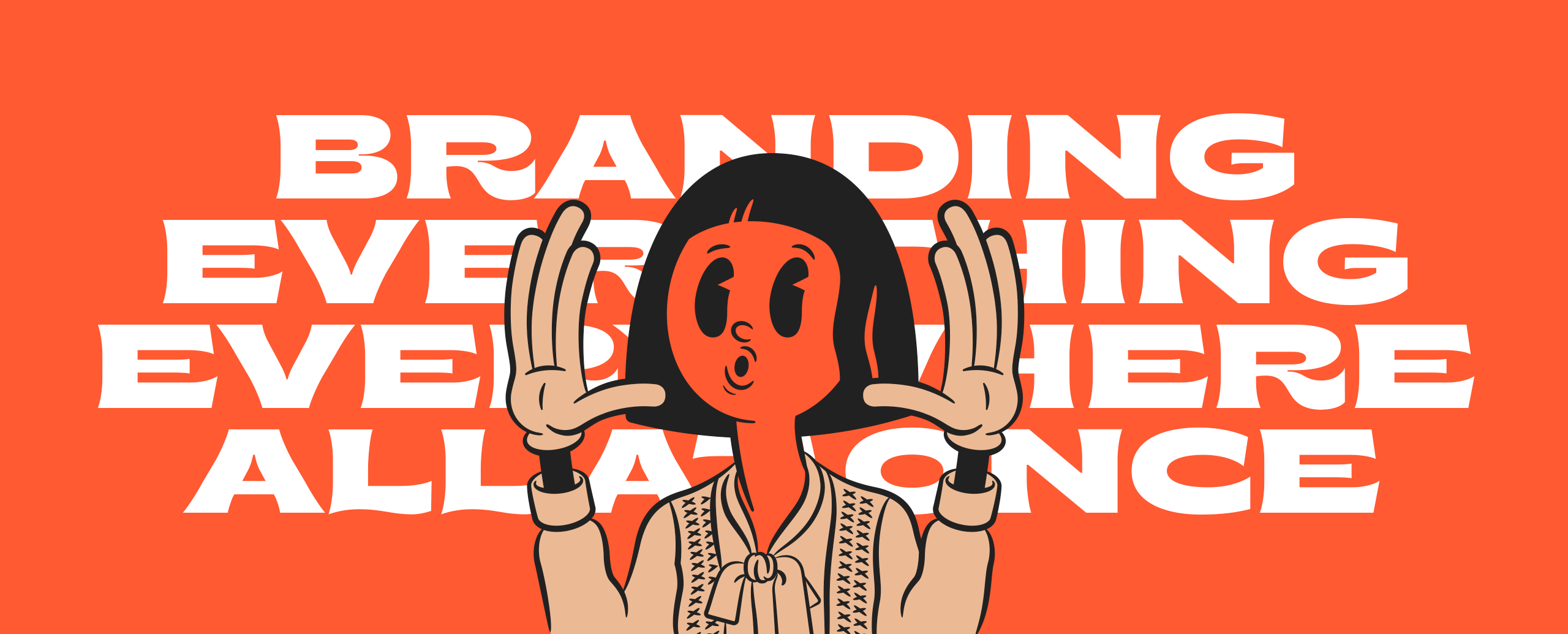Branding Everything Everywhere All At Once: The Truth About Branding
From early wall markings in Pompeii to block printing in China more than 3,000 years ago, branding has been around since the earliest civilizations made use of it for commerce and communications.
The word “brand” derives from the Old Norse word “brandr” and its meaning was literally “to burn” or “to mark with a hot iron”. This referred to the practice of cattle owners marking their livestock with a unique symbol to differentiate one person’s cattle from another.
Unfortunately, this definition hasn’t changed much to most of the general public and even small business owners. Ask anyone random off the street today and they’d probably say it’s simply a company’s logo or visual identity. On its surface, this may not seem like such a ridiculous take on its meaning if you’re over the age of 50. Branding and marketing has come a long way in recent decades with the lightening speed of emerging technologies, social platforms, and media channels.
A simple look at various companies will tell you that the the word and idea of “brand” means different things to businesses and more importantly to different consumers and audiences.
For some, the brand could be synonymous with their core product. Take for instance Quip. With an innovative tooth brush that vibrates at the press of a button and automatically turns off after 2 minutes to encourage healthy oral habits, their online subscription-based model redefined how consumers thought about their bathroom routine. While they’ve progressed with additional offerings and products, their brand was quickly known as that innovative tooth brush company.
For others, it could be more about their customer service and convenience. When Zappos bursted onto the online shopping scene, they were one of the first adopters of free shipping and a free 60-day return policy. The no-hassle approach gave customers the opportunity to purchase several pairs of shoes in different sizes and different brands and return the ones they didn’t want at no cost.
At the time, this was kind of a ground-breaking practice as the majority of online retailers viewed shipping as a valuable revenue stream. While Zappos lost out on some of this revenue, they instead gained a massive amount of market buzz and more importantly undeniable consumer loyalty. So for Zappos, their core brand tenet was consumer convenience.
Even more traditional ideas around branding has its caveats. Brands like Tiffany’s, T-Mobile, Starbucks, Home Depot, or Target have relied heavily on their brand colors as a driving tool to burn into the hearts and minds of consumers.
Brand logos (simplified): McDonald’s, The Home Depot, Target, T-Mobile, Tiffany & Co., Starbucks, Facebook, and Taco Bell.
Doing good is good for your brand and your business
In the past decade, companies offering goods and services with a clear purpose to improve society, community, and the environment have become a growing segment in popularity and the trend doesn’t seem to be slowing down anytime soon.
A company’s story and purpose as seen with TOMS has been synonymous with their brand. After traveling to Argentina in 2006, Founder Blake Mycoskie witnessed the hardships faced by children growing up without shoes and created a company that offered to match every pair of shoes purchased with a new pair of shoes for a child in need.
A recent study has found that over 80% of Millennials expect companies to make a public commitment to good corporate citizenship or corporate social responsibility (CSR) efforts. This growing demand for social responsibility from Gen Z and Millennials has come on the heels of corporate consolidation, widening income inequalities, and climate and ecological disparities.
With Millennials making up 75% of the workforce by 2025, it’s hard not focus in on them as a marquee consumer for access to valuable insights on buying habits, values, and priorities.
Final Thoughts
The truth of the matter is, branding is not any one single thing or aspect of a business or organization. Simply put, its everything.
Quality, innovation, convenience, value, personality, character, company culture, social responsibility and awareness, accountability, visual identity, style, and messaging all play important rolls in customer experience and how audiences perceive your brand.
Consumers and audiences are demanding more from companies and organizations they decide to do business with. A poor website, little to no engagement in communities, or a frustrating customer service experience can all lead a client or consumer to believe that everything else the company has to offer is inferior. Additionally, with the prevalence of online reviews on endless social channels and its easy to see why branding can have a profound effect on a business.

